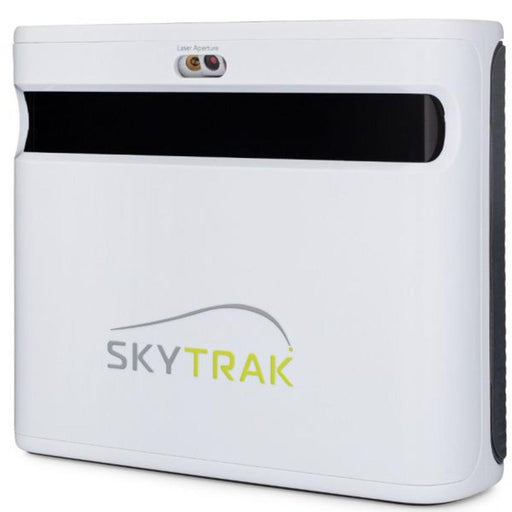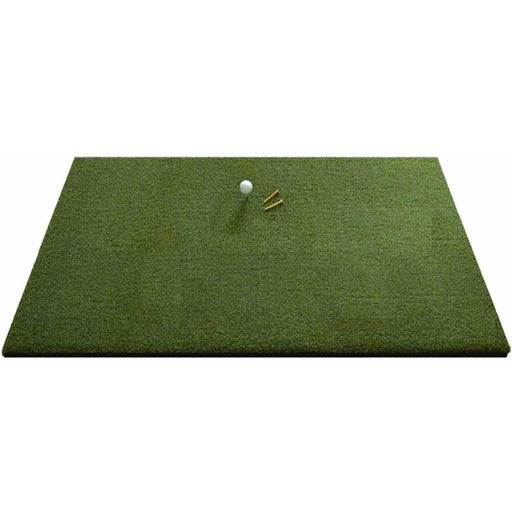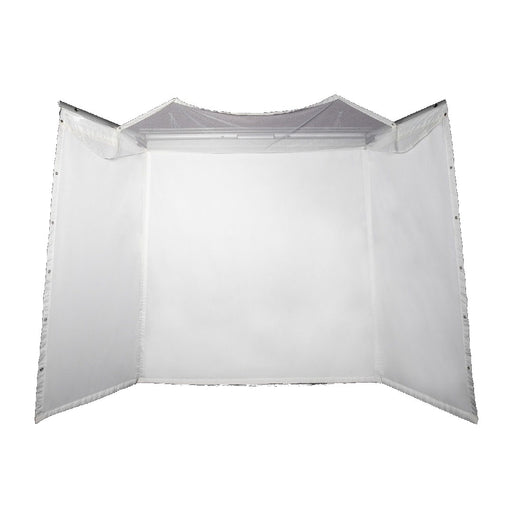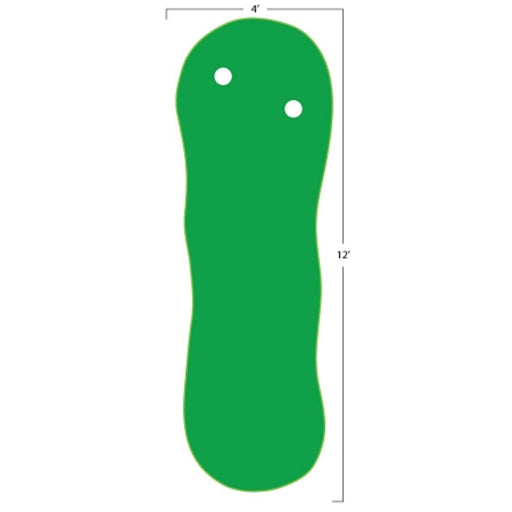
Data Measured with a Launch Monitor
Today we have more tools than ever when it comes to improving our golf game, and perhaps the most potent tool of all is the launch monitor. Today's launch monitors' ability to provide sophisticated, specific real-time data regarding our swing and shot means that you can continue to grow and improve your game in meaningful ways. You can track where your weak points are and how your improvement is going -ensuring you can focus your practice time where it matters most.
However, if you do not understand what specific data points mean or how they may apply to your wider golf game, you will not be able to make the meaningful improvements you should.
Looking for the top launch monitors? Browse our complete collection of Golf Launch Monitors today!
In this article, we will briefly discuss the essential data points you can expect your top launch monitors to provide.
In this article, we will cover:
- Distance and Height Metrics
- Club Angle and Path
- Ball Angle and Spin
- Speed and Smash Factor
- Using Data to Improve Your Game
Understanding Distance and Height Metrics

If you are using a high-end launch monitor like the Bushnell Launch Pro, the following are the type of data points you can expect as part of your per-shot feedback.
The Apex Height
This is the top height that your ball reached while in flight. This has a lot to do with the attack and launch angle, and knowing how to adjust the apex of your shot can be a powerful tool to have for certain challenging scenarios -such as clearing foliage.
Total Distance
This is the total distance that your ball has traveled after coming to rest. This includes the carry and the roll.
The Carry Distance
The carry distance refers to the distance the golf ball travels in the air before it initially hits the ground. This is important to know so you can further isolate and adjust aspects of your swing. Specific changes to your swing will affect carry distance, while others (like spin) will be more relevant to the total distance.
The Side Carry Distance and Side Total Distance
If you picture a straight line from your ball to the hole (or your targeted placement), that is the target line. The side total distance refers to the distance horizontally you are from that straight line once the ball comes to a complete rest. The greater your side carry distance, the more inaccurate the shot. The side carry distance refers to the total side distance traveled in the air before initial contact with the ground.
Understanding Club Angle and Path
The Attack Angle
The attack angle is the club head's vertical (up and down) movement at the time of impact. So if you hit down through impact, you'll have a downward attack angle. You will be able to adjust the spin rate of the ball as well as influence the launch angle and total distance by being able to better control your attack angle. Many amateurs hit around -5 degrees down with the driver, which is too steep.
The Club Path

The club path, or swing path, is the path the club was traveling towards the ball prior to contact and is measured in a horizontal plane relative to the target line. This will tell you if your club was going from outside-in, inside-out, or right down the line.
The Face Angle
If you picture a straight line from your ball to the target, the face angle is the angle (either to the right or left) that your club face is at the point of impact. This is often referred to as having an “open” or “closed” club face. A positive value would be “open” for a right-handed golfer. This is a very important factor for the horizontal angle of the ball's flight.
Understanding Ball Angle and Spin
The Launch Angle
This is the vertical angle that the ball travels away from the club after impact. A high vertical angle will cause the ball to “pop up,” while a low launch angle will create a ground ball effect. This angle will dramatically affect your overall carry distance.
The Horizontal Angle

The horizontal angle is the initial horizontal angle that the ball takes after impact with the club, and is measured relative to the target line we talked about in side distance. The more you “push the ball” right or “pull the ball” left, the larger the number will be.
The Ball Spin Rate
The spin rate refers to the speed of revolutions the golf ball takes immediately after being hit. Spin rate will slow the ball down in the air and stop it faster on the ground. The best golfers can swing faster and hit the ball harder but with a shallower attack angle that helps make for less spin. The average golfer has 3,275 RPMs, while a PGA tour pro can average around 2,700 RPM.
The Ball Spin Axis
The ball spin axis is the ball's rotation relative to the horizon. What this means for your shot is this can explain the amount of curve your balls are taking in the air. A negative spin will cause your ball to curve left in the air, while a positive spin will take it right.
Understanding Speed and Smash Factor
Ball Speed
This refers to the speed of the ball immediately after being hit. The speed of the ball will change depending on your club speed and the impact quality. Generally speaking, the faster the ball's speed, the farther the ball will travel.
Club Speed
This refers to the speed the club travels up to the point of impact. The faster the club moves into the golf ball, the greater the distance will be. The trick is to increase club speed while maintaining control of the clubface through the shot.
Smash Factor

The smash factor is a mathematical ratio that tells you how efficiently you put energy from the club into the golf ball (dividing the ball speed by the clubhead speed). This number roughly lets you know how well you are hitting the ball. Most players have an average smash factor around 1.4, while 1.5 is considered ideal.
Using Data to Improve Your Game
When taken alone, all of these data points may not mean much to you or your game, but with the proper context, this is the exact information you need to train and practice in the ways that will help you the most. Launch monitors can link directly with your phones, pads, or complete simulator systems to give you a wide range of tools and insights.
With a good launch monitor, you will digitize your play data, and from there, you have near limitless options for turning this data into actionable steps towards improving your game.
Ready to Try a Launch Monitor?
Launch monitors are an essential part of the future of golf. Launch monitors today are smaller and more affordable than ever. Even low-cost options from the right brand can be excellent products that give you incredible amounts of crucial data. Some launch monitors even pair up with golf simulators, allowing you to create a whole at-home golfing experience that you and your family and friends can enjoy.
Looking for the top launch monitors? Browse our complete collection of Golf Launch Monitors today! Want to learn more about golf simulators first? Check out our other helpful guides:

Have Questions About Golf Simulators?
Our expert team is here to help you find the perfect golf simulator for your needs.
Featured products
-
SkyTrak+
Original price $2,995.00 - Original price $3,145.00Original price$2,995.00 - $3,145.00$2,995.00 - $3,145.00Current price $2,995.00Introducing the SkyTrak+ Launch Monitor: Unmatched Accuracy and Advanced Features Experience a new level of precision and innovation with the SkyTr...
View full details -
ProTee Majestic Simulator Package
Original price $9,618.00 - Original price $13,848.00Original price$9,618.00 - $13,848.00$9,618.00 - $13,848.00Current price $9,618.00ProTee Majestic Golf Simulator Package: Elevate Your Indoor Golf Experience Transform your home or business into a golfer’s dream with the ProTee M...
View full details -
Eagle Golf Mat
Original price $370.00 - Original price $1,130.00Original price $370.00$370.00$370.00 - $1,130.00Current price $370.00Introducing the Eagle Golf Mat: The Ultimate Golf Experience Are you passionate about golf and demand nothing but the very best in your practice eq...
View full details -
Retractable HomeCourse® Golf ProScreen 180
Original price $2,299.00Original price $2,299.00 - Original price $2,299.00Original price $2,299.00Current price $1,999.00$1,999.00 - $1,999.00Current price $1,999.00HomeCourse® Golf ProScreen 180 HomeCourse® Golf ProScreen 180 is a retractable golf screen and enclosure. HomeCourse® Golf ProScreen 180's ballisti...
View full details -
The Augusta V2 4'x12' 2 Cups
Original price $399.00Original price $399.00 - Original price $399.00Original price $399.00Current price $329.00$329.00 - $329.00Current price $329.00The Augusta is one of Big Moss’ traditional models. It offers unmatched versatility for teaching and year round practice. Make a long-term investme...
View full details





